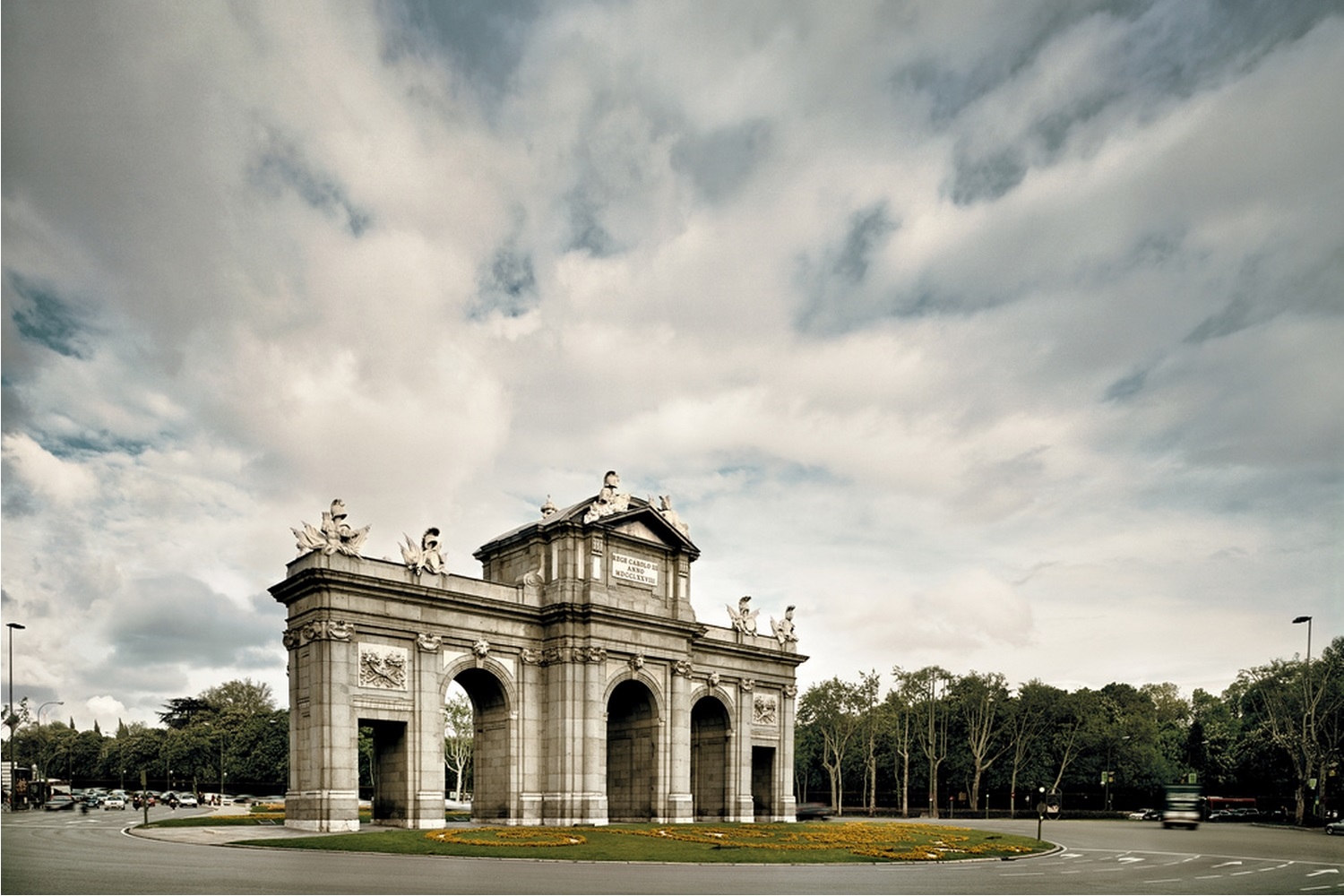PUERTA DE ALCALÁ
"There it is, there it is, watching time go by", as the local saying says. The Puerta de Alcalá is today one of the city's emblematic monuments. When Charles III ordered it to be built, it was one of the five access gates to the city of Madrid.
Its current appearance dates from 1778 and is the work of the Italian architect Francisco Sabatini, who also worked on the Royal Palace. It was ordered to be built by King Charles III, known as "the best mayor of Madrid", to replace another one that was already in poor condition and which displeased the monarch.
The original one consisted of three arches and was called the Alcalá Gate because it connected Madrid with the capital of the Henares River. In addition, when the gate was part of the walls surrounding the town of Madrid, it had a wrought iron grille that was closed at night to prevent thieves from passing through.
The Puerta de Alcalá that we know today is neoclassical in style and has five openings, three with semicircular arches, which are larger and intended for carriages, and two with lintels, which are smaller and intended for pedestrians. Above the largest bay is an inscription in Latin that reads: 'Rege Carolo III. ANNO MDCCLXXVIII" (King Charles III. Year 1778). The material used for its construction is granite from Segovia and limestone from Colmenar de Oreja for the decorative elements.
The Puerta de Alcalá has come down to us with hardly any modifications or damage. There are still some traces of shrapnel left on the surface by French troops in 1808 and by the Hundred Thousand Sons of St. Louis in 1823. It was declared a National Monument in 1976.
Address: Plaza de la Independencia (Metro: Retiro Line 2)


